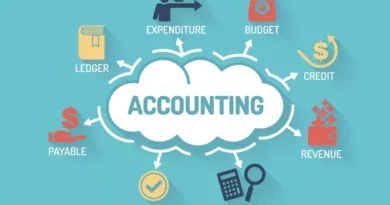HOW EFFECTIVE IS FOG COMPUTING WHILE HANDLING BIG DATA CHUNKS?
Nowadays software design and deployment, disaster recovery, virtual desktops, big data analytics, and customer-facing web apps are all being used by organizations of all sizes and industries. This has given open a lot of doors for cloud consulting services. Cloud services distribute IT resources on-demand through the Internet with pay-as-you-go tariffs. Instead of purchasing, operating, and maintaining physical data centers and servers. A lot of companies are using cloud providers like Amazon Web Services to obtain technological services such as processing power, storage, and databases on an as-needed basis (AWS).
Digital transformation companies are trying to utilize the cloud to its maximum potential. This is where technologies like fog computing come into the picture. Fog computing refers to a network fabric that extends from the point where data is produced to the point where it will be kept. Whether in the cloud or in a customer’s data center. Fog is a layer of a dispersed network environment that is linked to the internet of things (IoT) and cloud computing. Cloud vendors who provide public infrastructure as a service (IaaS) may be considered as a high-level, universal endpoint for data; data from IoT devices are produced at the network’s edge. Fog bridges the gap between data that must be transferred to the cloud and data that can be processed locally at the edge.
BENEFITS OF FOG COMPUTING
Data Management Across Platforms
IoT is transforming the ways retail establishments are running. Fog computing has been shown to be very useful in managing ever-increasing virtual data. Previously, on-site technology was used to handle databases, but with the widespread usage of mobile and tablet devices, merchants increasingly consider the cloud as the ideal choice for data management. Many of these edge units will need to communicate with one another. The adaptability and agility elements of fog computing will take care of this.
Security
Multiple devices can be connected to a single network using fog computing. As a result, rather than being centralized, processes take occur at numerous endpoints in a complicated distributed system. This makes it simpler to see possible risks before they have an impact on the entire network. It can also regulate the level of privacy. Instead of transferring sensitive user data to a centralized cloud infrastructure, any sensitive data may be evaluated locally. The IT company will try to track and operate the gadget in this manner. Additionally, any portion of data that requires analysis may be transferred to the cloud.
Reduced Latency
Latency was a major issue that firms had to cope with when employing cloud computing. If the time it takes for information to hit the receiver’s endpoint is too long, it might not only lower consumer satisfaction but also put them in potentially dangerous circumstances. Fog computing can help with on-cloud processing processes that are sluggish. Data transfer will become faster when fog computes the data on the server that is closer to the main data center, removing the latency issue.
Productivity
Fog apps may be used by customers to make the system work in the manner they want it to. With the correct set of tools, developers may simply create these fog apps. They can deploy it whenever they wish when the work is completed.
BENEFITS OF CLOUD COMPUTING
Elimination of Backup and Recovery Management
The very first thing that has to be done in your business is to ensure its safety. Spending additional money on infrastructure to ensure safety is not a good idea. Choosing cloud computing means eliminating the need for a backup system entirely. Instead of being stored in a single location, data is dispersed among several linked servers. Everything is the responsibility of the cloud service provider, from data security to legal compliance. Everything would be taken care of automatically with the best means. Cloud computing is a boon to businesses such as banking and finance. Check out Cloud computing courses for in-depth knowledge and expertise.
Cost Efficiency
Creating your own infrastructure and maintaining it is a time-consuming and costly endeavor. It is out of reach for startups and small businesses. Migrating to the cloud saves you from employing an IT crew and paying for pricey updates on a regular basis. Furthermore, you may simply scale up or scale down and pay for cloud services based on your usage.
Inter-departmental engagement is no longer a problem.
Cloud computing emerged as a result of huge businesses’ failures in inter-departmental communication, particularly across many locations. Because of the data security, scalability, and simplicity of access associated with cloud computing services, they bring a significant sense of relaxation. Employees, users, consumers, and third parties from diverse places are brought together under one roof by cloud computing services, which eliminates those time-consuming processes. It’s gotten pretty simple to share and converse with anyone on board.
Scalability is only an email away.
Cloud computing enables you to upgrade to greater levels of security by just sending an email. All you have to do is write an email or phone a service provider and describe your requirements, and you will notice an immediate difference. In large organizations such as schools, universities, and even e-commerce sites, where user loads might skyrocket, an IT infrastructure can be instantly scaled up at a fraction of the expense of building up yet another hardware system along with essential software changes.
DRAWBACKS OF FOG COMPUTING
Authenticity
A fog computing service is a large-scale service. End users, internet providers, and cloud providers make up fog computing. In the fog, this might lead to challenges with trust and authentication.
Degree of Sophistication
Fog computing is a tough idea to grasp because of its intricacy. Many devices, placed in various places, each store and analyze their own collection of data. This might add to the network’s complexity. In addition, as the number of fog nodes in a fog architecture grows, so does the amount of power used. This construction also requires additional upkeep.
Security
Due to many devices and fog nodes, there’s a possibility that these fog nodes are in a weaker secure setting. Hackers can easily use a bogus IP address to get access to the fog node in question. Alternatively, they raise the chance of damaged files penetrating the principal data stream and infecting the device as well as the enterprise.
DRAWBACKS OF CLOUD COMPUTING
Downtime
Because cloud computing solutions are fully reliant on the internet, organizations cannot access the data or apps housed in the cloud without an active internet connection. Google experienced three significant disruptions in 2020, affecting the bulk of its providers and clients worldwide.
Cybersecurity
One of the primary worries about keeping sensitive enterprise data on the cloud is security. Despite cloud service providers using modern security safeguards, keeping private material on remote computers owned and maintained wholly by a third party always poses security concerns. When a company adopts a cloud computing paradigm, the cloud vendor and the user share responsibility for IT security. As a result, each stakeholder is accountable for the assets, processes, and functions under their control.
Control is limited.
Because the cloud provider owns and manages the cloud infrastructure, organizations that use cloud computing services have little control over their data, apps, and services. As a result, having a good end-user licensing agreement in place is critical for understanding what a corporation can and cannot do within a cloud architecture.
Lock-in of vendors
Trying to migrate workload and operations from one cloud provider to another is a significant difficulty in cloud computing. Compatibility and integration challenges may arise as a result of differences across cloud environments. If the transfer is not handled appropriately, an organization’s data may be exposed to needless security threats.




